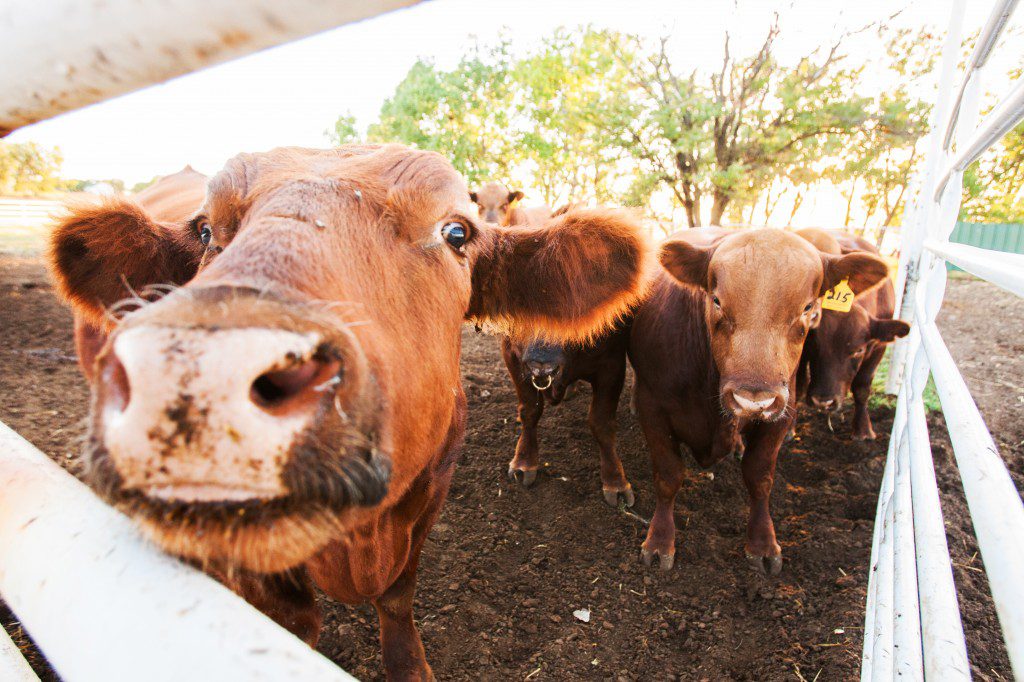
It sounds like a plot from a pulp Western novel.
In 2013, special agents from the Oklahoma Department of Agriculture Food and Forestry were called to Pontotoc County to track down the bandits who stole 99 head of cattle from rancher Jet McCoy. The cattle were tracked to a livestock market in Atoka, where they were unloaded for an impressive sum. After days of covert surveillance and a high-speed pursuit, ODAFF agents nabbed the first suspect; the second surrendered shortly thereafter.
If the McCoy Ranch case sounds bizarre and dated today, think again. According to Jerry Flowers, chief agent in the ODAFF Law Enforcement Section, nearly 1,000 head of cattle were reported stolen in Oklahoma in 2013, with some 290 felony charges filed against the alleged criminals.
According to Flowers, agriculture-related theft is a real problem in all 77 Oklahoma counties.
“The economic impact of cattle theft to this state is significant when you take into consideration the price of cattle,” Flowers says. “A rancher who has cattle stolen usually suffers a significant loss. Ten head of cattle stolen could be valued from $10,000 to $12,000. It depends on the type of cattle. Show animals could even be worth more.”
But why has cattle rustling seen an unwelcome return in the 21st century? One reason is the soaring price of beef itself, fueled by a six-decade low in the size of U.S. cattle herds. In 2013, the price of beef rose five percent, and it’s expected to rise at least seven to eight percent both this year and in 2015. Ground beef, especially, may come with a premium price tag in the near future.
“Cattle demand is at an all-time high, which is a very good thing for our industry and the ranchers that work very hard,” says Chancey Hanson, communications director for the Oklahoma Cattlemen’s Association.
“Price goes up when supply is low, if demand is constant or goes higher,” Hanson adds. “With that said, supply is low because many ranchers had to downsize their herds and sell out over the last few years because of the dry weather. Dry weather means less forage availability, which makes it more expensive to feed animals. Input costs are high as well. Land, feed, fuel, equipment and important items to ensure your cattle’s health are also expensive. One must also consider with high cattle prices, it costs a lot for ranchers to be able to rebuild their herds.”
Hanson says that the cattle population looks set to replenish itself somewhat this year, but only if the weather cooperates. Otherwise, high beef prices may last far past 2015.
The rise of beef prices isn’t the only culprit contributing to cattle rustling, Flowers says.
“One of the most common factors we see today is the use of methamphetamines by the suspects who steal the cattle,” Flowers says. “Cattle are easy to steal and easy to sell. The individuals we apprehend stealing cattle are more often than not looking for fast cash to buy more drugs.”
Regardless of the motivation, cattle rustlers can have a shattering financial impact on livestock owners.
“Oklahoma is the fifth largest cattle-producing state,” Hanson says. “Cattlemen and women are very passionate and compassionate people. Taking care of their land and animals is not just a job, it’s everything – for a rancher, that devastation is multiplied. For example, if five bred cows are stolen from a ranch, the rancher hasn’t just lost five cows; he has lost the income of selling their offspring.”
So what precautions can cattle owners take during this new heyday of cattle heists?
“Brand your cattle,” Flowers says. “A brand on your livestock is like a tag on your truck. The brand will identify the animal. In the event the animal is stolen, the brand gives law enforcement a tool needed to identify the animal, and the owner the ability to ID their livestock.”
“We encourage our members to not only brand their cattle, but also to register their brand with the Oklahoma State Brand Registrar at the Oklahoma Cattlemen’s Association,” Hanson says. “That way when cattle are noticed missing, they will have a permanent form of identification. If a brand is registered, the brand registrar has the capability to look up that brand and find the owner’s contact information. We also encourage our members to follow guidelines from the Oklahoma Department of Agriculture, Food and Forestry Investigative Services.”























